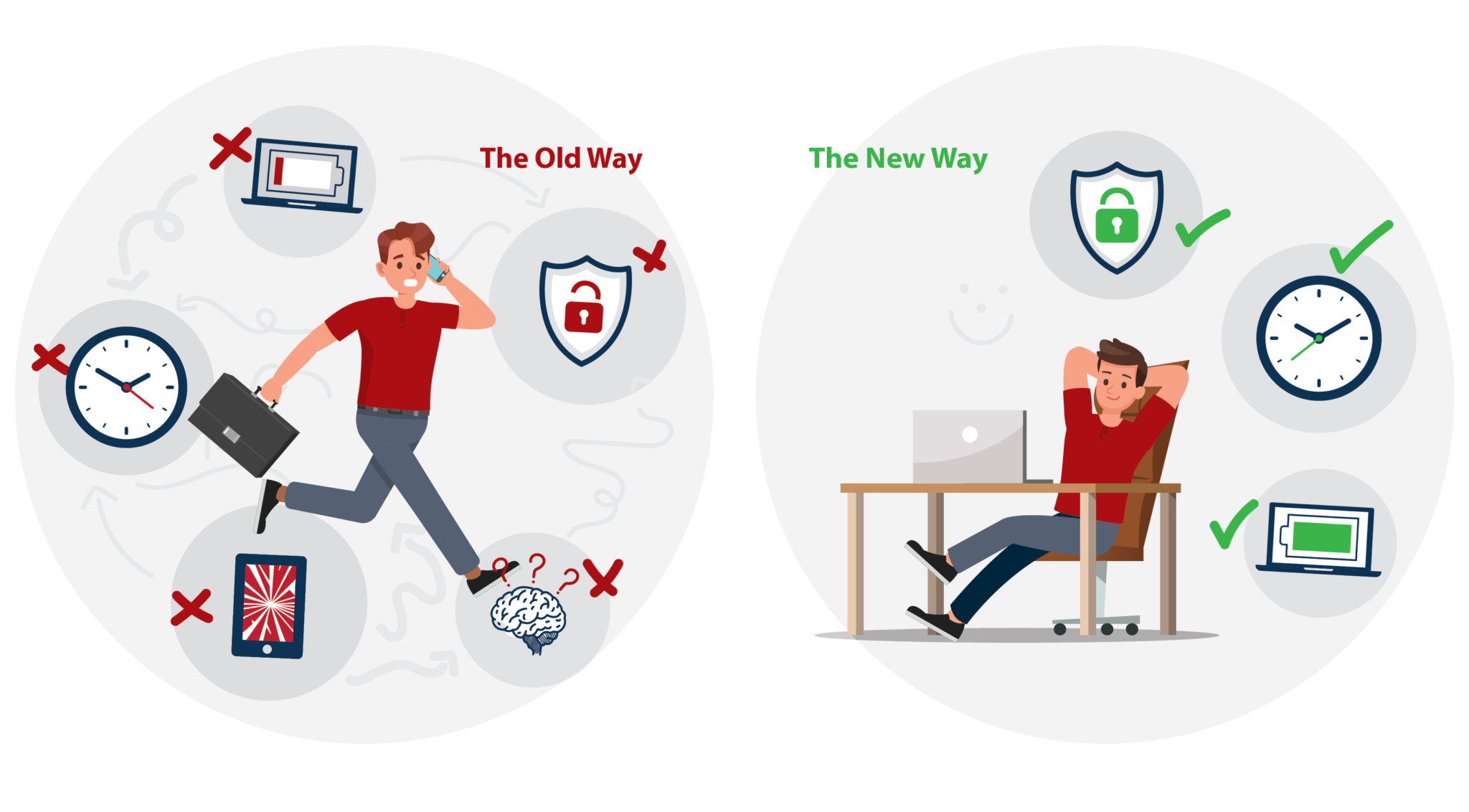Background
In North America alone, a prominent global supplier of technology and services has more than 30,000 associates. With an established culture of continuous improvement, shaping change and striving for excellence, they employ engaged and motivated individuals who take ownership for the success of the business.
IT site lead, Jeff, is one of those driven individuals. He is responsible for a vast fleet of laptops, barcode scanners and other hardware, servers, networks, wireless and everything that connects and helps run an entire 300,000+ sq. ft floor of a 24/7 manufacturing facility in Indiana. He’s also the lead on a project for implementing the best solution to secure, store, charge and assign mobile and tiny desktop devices across 120+ North American locations.
Challenge
Jeff is often pulled in many different directions throughout his day. He might get a call at any moment, requesting a replacement device, which means he needs to stop what he’s doing and meet an employee back in his office to assign a device to them that may or may not be fully charged and ready to go. In a plant of this size, this could literally mean a quarter-mile walk back to his office and a significant interruption to his other responsibilities.
Beyond that, there are three shifts of team leaders who use mobile devices. Jeff is just one person – he can’t be available around the clock. Other manufacturing facilities within the company do not have their own on-site IT professionals, so when they reach out for assistance from Jeff, you’re adding a few days of shipping time to the already cumbersome device replacement process.
To add one more layer of complexity, Jeff was one of many corporate employees working from home during the pandemic. A call for a replacement device then meant he’d have to coordinate with an on-site employee – often from HR or security – to get the equipment out of his office and to the user. The project quickly became a higher priority when COVID hit.
Solution
Jeff knew that an investment in something without cloud connectivity would leave them with the same inefficiencies and workflow challenges they were already facing. So, after scouring the internet for secure mobile device charging solutions, he narrowed in on two smart lockers.
Ultimately, it was the exceptional support from PC Locs account managers and the aligning company visions between his company and PC Locs that made the decision easy for Jeff. He piloted two FUYL Tower™ Smart Charging Locker demo units – one at his home plant in Indiana and one in South Carolina.
Results
Setup was easy, and the managers, users and business units seeing the FUYL Towers in action were instantly and unsurprisingly impressed. The cloud-based smart lockers quickly became an indispensable piece of three common IT services: deploying new devices, break/fix, and collecting devices as a part of employee off-boarding.
What used to be a 5-6 point workflow that took at least an hour of Jeff’s time per request has now turned into a single message that takes about a minute of his time – replying with the location of the Tower, which bay to use, and a PIN to enter for access to a fully-charged replacement.
The user can fulfill their own request on their own time – whether they’re in Indiana, South Carolina or Kentucky – where one business unit has already purchased two FUYL Towers of their own after seeing the demos.
What’s Next?
For Jeff, this partnership is just getting started. He envisions opportunities for FUYL Towers to streamline workflows across all business units and corporate offices.
Recognising that the future-proof design of the FUYL Tower allows for serviceability in the field and over-the-air software and firmware updates, Jeff confidently sees FUYLs helping his teams manage new hardware investments like smart glasses and whatever else is to come.
Jeff is living out his company’s mission of innovation and bringing new technology into operations to improve efficiency and save the company time and money. He’s also living ours – making life easier.
Click here to download the PDF of this case study.

